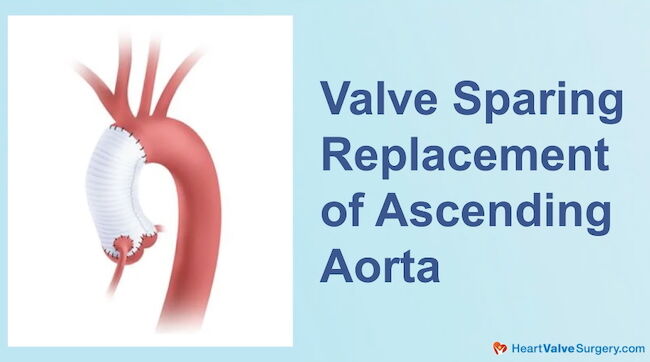Surgeon Q&A: Bicuspid Aortic Valve Gradients & Aortic Aneurysms
Written By: Allison DeMajistre, BSN, RN, CCRN
Medical Expert: William Brinkman, MD, Aortic Valve Surgeon, Baylor, Scott & White The Heart Hospital-Plano, Plano, Texas
Reviewed By: Adam Pick, Patient Advocate, Author & Website Founder
Published: May 15, 2025
Bicuspid aortic valve disease is the most prevalent congenital heart defect, affecting approximately one to two percent of the world’s population. Although the valve defect may go unnoticed while patients are young, it can eventually cause complications with valve function, like stenosis and regurgitation. In addition to valve complications, there can also be involvement with the ascending aorta or aortic root in the form of an aneurysm. In many cases, impaired aortic valve function and aortic aneurysm happen simultaneously. Given all the variables accompanying bicuspid aortic valve disease, it’s no wonder that patients have numerous questions about treatments and interventions when they start to experience problems associated with the bicuspid aortic valve.
We received a patient question on this topic from Chappie, one of our YouTube viewers, based on a video we posted about bicuspid valves featuring Dr. Bill Brinkman. Chappie asked, “Would a bicuspid aortic valve with a normal 1.1 peak gradient need replacement if my aortic aneurysm needs to be repaired?”
We were thrilled to meet Dr. Brinkman during the Society of Thoracic Surgeons Conference to answer Chappie’s question. Dr. Brinkman is a leading aortic valve surgeon at Baylor, Scott & White The Heart Hospital-Plano in Plano, Texas. He has performed over 2,500 heart valve surgeries throughout his extraordinary career.
Facts About Aortic Aneurysms and Bicuspid Aortic Valve Gradients
Here are the key insights shared by Dr. Brinkman:
- Bicuspid aortic valve treatment in the presence of an aneurysm is not always required. Dr. Brinkman explained, “If that valve is working well, we will usually do what’s called a valve sparing replacement of the ascending aorta. Sometimes, if the root is enlarged, we will do a re-implantation or a David procedure, and we’ve had a lot of success and very good outcomes.”

- Brinkman explained that a primary factor in determining treatment is the condition of the valve leaflets and whether they are thickened or stiffened. Regarding Chappie’s peak gradient, he said, “When you have a peak gradient that low, it means the leaflets are very supple and opening and closing very easily like a flag in the wind as opposed to stiff leaflets that are barely opening. If you have stiff leaflets, we’re talking replacement with a mechanical valve, biological valve, or a Ross operation.”
- What gradient number might cause a patient concern when looking at their echocardiogram? “When somebody says you have an increased gradient, that usually implies aortic stenosis,” said Dr. Brinkman. “Anything over 40 is what we call severe and would be a clear indication for surgery. Now, if you have a mild gradient, maybe like 15 to 20, and we’re in there fixing the aneurysm, we may want to go ahead and replace it, but it’s not a valve that you would want to repair because the leaflets are not that solid to begin with.”
Thanks Dr. Brinkman and Baylor, Scott & White!
On behalf of all the patients in our community, thank you, Dr. Bill Brinkman, for everything you and your team are doing at Baylor, Scott & White The Heart Hospital- Plano in Plano, Texas.
Related links:
- See 50+ Patient Reviews for Dr. Brinkman
- Ask Dr. Brinkman: Treating Bicuspid Aortic Valves and Aortic Aneurysms
- Patient Review: Cardiac Surgery Outcomes Report from Baylor, Scott & White
Keep on tickin,
Adam
P.S. For the deaf and hard-of-hearing members of our patient community, we have provided a written transcript of our interview with Dr. Brinkman below.
Video Transcript:
Adam Pick: Hi everybody. It’s Adam with HeartValveSurgery.com and we’re in Los Angeles, California at the Society of Thoracic Surgeons Conference. I’m thrilled to be joined by Dr. Bill Brinkman, who is a leading aortic valve surgeon at Baylor Scott White, the Heart Hospital Plano, in Plano, Texas.
Dr. Brinkman, you and I have known each other for a very long time. It is always great to see you and thanks for being with me.
Dr. Bill Brinkman: Thank you.
Adam Pick: Here at STS, a lot of great new research is coming out, data. We’re learning a lot. And at the same time, we’re getting questions from patients all over the world about heart valve therapy. This one comes in from Chappie at YouTube, where Chappie is actually asking a question based upon your video that we did with you about bicuspid aortic valves. Chappy asks, “Would a bicuspid aortic valve with a normal 1.1 peak gradient need replacement if my aortic aneurysm needs to be repaired?”
Dr. Bill Brinkman: That’s a good question. There’s a lot of factors, but I would say in general, no. If that valve is working well, then usually we will do what’s called a valve sparing replacement of the ascending aorta.
And sometimes if the root is enlarged, we will do a re-implantation procedure or a David procedure. And we’ve had a lot of success and very good outcomes with that. I think the main question is the leaflets. Are they thickened? Are they stiff? And when you have a peak gradient that’s that low, like you said, that means the leaflets are very supple.
And just kind of opening and closing really easy, like a flag in the wind, as opposed to stiff leaflets that are barely opening. If you have stiff leaflets, then we’re talking replacement. And then we would consider, a mechanical valve, a biological valve, a Ross operation, those sort of things.
Adam Pick: For patients who might be wondering, what would be a gradient number, if they’re looking at their echocardiogram, that might cause them some concern?
Dr. Bill Brinkman: When somebody says you have an increased gradient, that usually implies there’s aortic stenosis. Anything over 40 is what we call severe. And that would be a clear indication for surgery. Now, if you have a mild gradient, maybe like 15 to 20, and you’re in there fixing the aneurysm, you may want to go ahead and replace it, but it’s not a valve that you’d want to repair because the leaflets are not that solid to begin with.
Adam Pick: Well, I love what you’re talking about in terms of if possible, keep the aortic valve tissue in place for the durability. It provides all of this and Chappy. I hope that helped you. I know it helped me. And Dr Brinkman, as always, thanks for everything you and your team are doing at Baylor Scott and White The Heart Hospital in Plano, Texas.
Dr. Bill Brinkman: Thank you.




